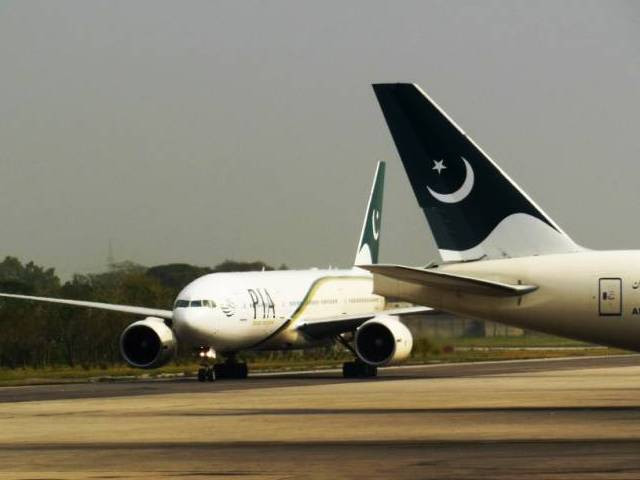Is our national air carrier safe?
While aviation accidents are not a rarity in Pakistan, it is interesting to note that such accidents are declining

PHOTO: FAISAL MOIN/EXPRESS
While aviation accidents are not a rarity in Pakistan, it is interesting to note that such accidents are declining globally, with 2016 being the year of all-time low accidents. According to the recently released IATA safety performance data for 2016, there were only 1.61 accidents per million sectors, with only four fatal accidents for passenger flights.
While one could argue that aviation accidents in Pakistan depict a few isolated cases that might happen anywhere and be content with local airlines’ claims of adhering to the highest standards of safety, it is worthwhile to look a bit deeper and ascertain the validity of such claims.
Reviving PIA a top priority: Nisar
Our national airline has had 36 accidents over the course of its life of almost 65 years, including 11 fatal ones, which is higher than international benchmarks. Turkish Airlines, for instance, has only had 19 accidents in 83 years, while the accident history of Qatar and Etihad Airways has been totally clean. Emirates reported its first accident of crash landing in 2016, without any loss of life. PIA’s incidence of accidents, after adjusting for plane size and kilometres travelled is staggeringly high, since its operations have been way smaller compared to these airlines. An international website, planecrashinfo.com compares individual airlines’ accident rates with the average accident incidence for 80+ airlines and reports PIA’s to be the highest at 1266%, based on 10 years of aviation data.
It is important to acknowledge that fatal accidents are rare and cannot accurately reflect airline safety. Much deeper insights can be obtained by looking at ‘near misses’. Nate Silver, a famous American data scientist, compared incidents data including ‘near misses’ for a number of commercial airlines over two periods, 1985-1999 and 2000-2014, using Safety Network’s database. He was investigating if airlines that performed poorly earlier continued to do so later and if some were consistently better or worse than others. After accounting for scale of operations, he found PIA to be an outlier with persistently high rate of incidents over three decades, with the number of incidents increasing significantly in the recent past.
Serene Air jet grounded after accident at Islamabad airport
The Civil Aviation Authority (CAA) has put in place a Safety Investigation Board to investigate all serious accidents. While Havelian crash is still being investigated, it is an eye-opener to go through the previous investigation reports for fatal crashes. The investigation report of 2006 PIA crash near Multan, blamed mistakes of the air and maintenance crew for the accident, and specially recommended improved training for cockpit crew and a system to study human behaviour of aircrew with a view to pre-empting their behaviour under emergencies.
The investigation reports for other domestic airline crashes are also not very different. For instance, the investigation report for the Air Blue crash, in Islamabad in 2010, concluded that the accident was primarily caused by the air crew, who violated all established procedures. The investigation report for Bhoja crash, near Rawalpindi in 2012, also identified the crew’s decisions as the cause of the crash and blamed both the airline and the CAA. The report, yet again, recommended improved training and strict monitoring of flight crew proficiency.
Two killed as training aircraft crashes in Faisalabad
While it will be interesting to see the investigations report for the 2016 crash, one could assume that the responsibility will eventually fall on the crew and lack of training. The only way to avoid these accidents is to actually start learning from the past and acting upon the safety recommendations of investigation reports. CAA should undertake equally rigorous investigation of ‘near misses’ and share these reports publicly. It is also critical to ground old aircraft and those that have far exceeded the average aircraft age. Personality profiling and behaviour predictability remains another unaddressed area requiring attention. There is a serious need to improve the training regime for flight crew to enhance their capability to deal with emergencies.
Published in The Express Tribune, May 3rd, 2017.
Like Opinion & Editorial on Facebook, follow @ETOpEd on Twitter to receive all updates on all our daily pieces.















COMMENTS
Comments are moderated and generally will be posted if they are on-topic and not abusive.
For more information, please see our Comments FAQ